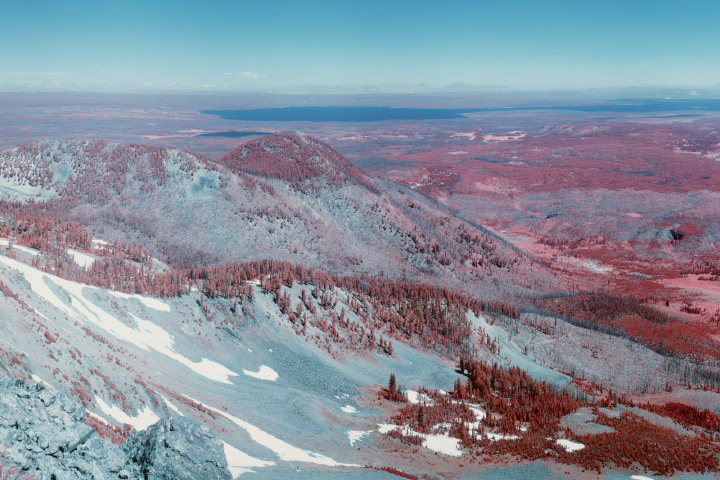


On August 3, 2004, NASA’s Mercury Surface, Space Environment, Geochemistry, and Ranging (MESSENGER) spacecraft began a seven-year journey, spiraling through the inner solar system to Mercury. One year after launch, the spacecraft zipped around Earth, getting an orbit correction from Earth’s gravity and getting a chance to test its instruments on a familiar planet.
The top image is a view of South America and portions of North America and Africa from MESSENGER’s Dual Imaging System’s. The wide-angle camera records light at eleven different wavelengths, including visible and infrared light. Combining blue, red, and green light results in a true-color image from the observations.
The image above substitutes infrared light for blue light in the three-band combination. The resulting image is crisper than the natural color version because our atmosphere scatters blue light. Infrared light, however, passes through the atmosphere with relatively little scattering and allows a clearer view. That wavelength substitution makes plants appear red. Why? Plants reflect near-infrared light more strongly than either red or green, and in this band combination, near-infrared is assigned to look red.
Apart from getting a clearer image, the substitution reveals more information than natural color. Healthy plants reflect more near-infrared light than stressed plants, so bright red indicates dense, growing foliage. For this reason, biologists and ecologists occasionally use infrared cameras to photograph forests. The second photo shows Mount Sheridan in Yellowstone National Park in infrared light. Healthy pine forests are bright red, while less healthy trees are very dark.
To learn more about how scientists create images from both visible and infrared observations, read Why is that Forest Red? How to Interpret a False-Color Satellite Image.
(NASA image based on data from the Mercury Dual Imaging System (MDIS) on Messenger. Yellowstone photograph courtesy National Park Service.) Caption by Holli Riebeek.